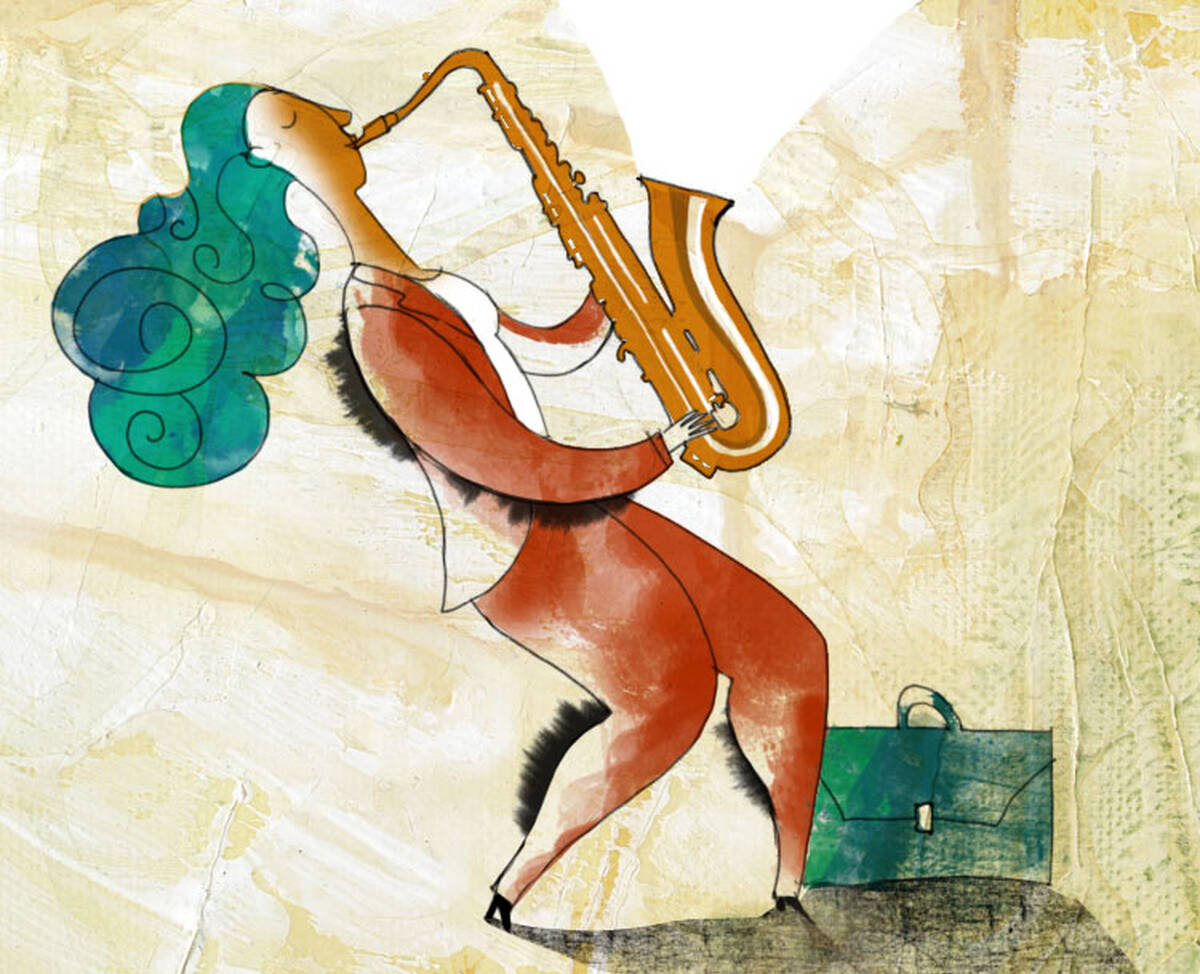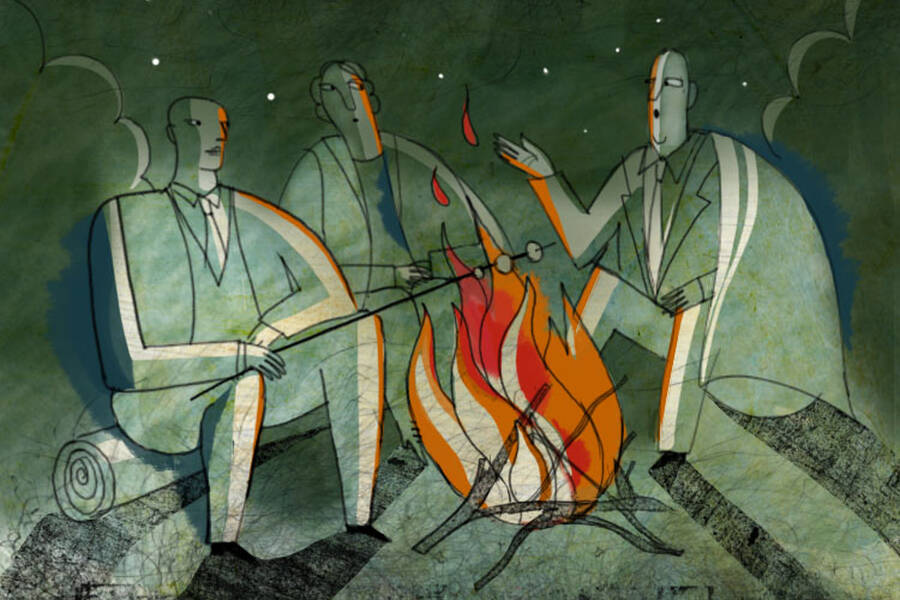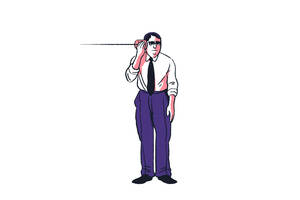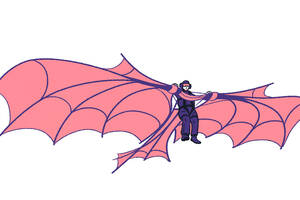Leadership Jan 21, 2016
Podcast: Executives, Put On Your Dancing Shoes
How lessons from the arts can help you become a more effective leader.

Yevgenia Nayberg
In this month’s Insight in Person podcast, we ask: Why are business leaders turning to the arts—from storytelling to jazz ensemble, Argentine tango to tap—for insights into how to do their own jobs better?
You will hear from Michelle Buck, a Kellogg School professor, Stephen Alltop, a conductor and professor at the Beinen School of Music, Michael Gold, a jazz bandleader and director of the arts consultancy Jazz Impact, and Jenai Cutcher West, a tap dancer and instructor, about using arts-based experiential learning to bring epiphanies to executives.
Podcast Transcript
[music prelude]
Jessica LOVE: Jenai Cutcher West has, by all accounts, a very strange job.
She is a professional tap dancer, and she’s executive director of the Chicago Dance History Project. But she also leads tap-dancing workshops—for business leaders.
In essence, she asks leaders at places like General Electric and the Federal Reserve to dance.
[sound of tap dancing]
LOVE: Hello, and Welcome to Insight in Person, the monthly podcast of the Kellogg School of Management at Northwestern University. I’m your host, Jessica Love.
This month, we ask: Why are business leaders turning to the arts for insights into how to do their own jobs better?
We talk to Cutcher West, our tap dancer. We also talk to a classical music conductor, a jazz bandleader, and a Kellogg School faculty member, all of whom use the arts to show corporate executives some fascinating new ways of seeing.
So stay with us.
[music interlude]
LOVE: How would you act out a nursery rhyme—just by dancing?
This is one of the exercises Cutcher West gives executives.
Jenai CUTCHER WEST: The only two rules I give them are they can’t sing or vocalize, because that defeats the purpose, and they can’t work alone. Those are the only two rules. Then I tell them to go.
LOVE: So naturally, everyone freezes. Eventually, though, they’ll start to form groups. They’ll get on their feet. But still, they aren’t dancing.
Then, as if on cue, they start asking questions.
CUTCHER WEST: “Well, do we all have to do the same thing at the same time? Are we able to use anything in the room?” All of these questions, and so I pause. I bring the group back together and point out that everybody has these questions, and I remind them what the two rules are.
Then we talk about how they’re already imposing limitations on themselves that aren’t there, and putting this assignment in some sort of pigeonhole or box on their own, and that’s usually a huge epiphany for them.
LOVE: And there you have it. An epiphany.
[music interlude]
LOVE: Michelle Buck, a clinical professor of management and organizations at the Kellogg School, explains why these epiphanies are so powerful.
Michelle BUCK: To look outside of the business world, to what seems like a completely different domain, gain a relevant insight, and then work to apply it back, increases the learning.
LOVE: Buck has spent the last two decades examining the intersection of business leadership training and the arts.
By incorporating dance, jazz, and Afro-Caribbean percussion ensembles, photography, and storytelling, Buck offers executives an outside perspective on problems that business leaders and artists encounter—from innovation, to communication, to collaboration.
What those executives learn is that artists’ issues aren’t always that different from the challenges faced by corporate leaders. Seeing how these challenges are addressed in other realms—realms that are totally unfamiliar to them—can give these leaders some fresh insight into their own issues.
Fresh insight, Buck says, has never been more critical.
BUCK: There’s often no precedent for what needs to be done to be effective in the business world.
Business is changing so rapidly, in terms of organizational structures and processes, that increasingly business executives have to look to different sources for inspiration about how to be effective, how to maximize performance, and especially how to be agile and how to be creative.
LOVE: And because these arts-based learning experiences leave such an impression and involve experiential learning, the epiphanies themselves are memorable.
Epiphanies like: Don’t impose limits on yourself just because you have found yourself in unfamiliar territory. And don’t be afraid to be bad at something, especially when you are first starting out.
Here’s Cutcher West again.
CUTCHER WEST: I’ve worked really hard at, I would call it, letting go of preciousness.
Especially as adults, it’s hard not to be good at something right out of the gate, or have your first thought not be a masterpiece. I’ve learned to embrace that and realize it’s not about that at all. In fact it’s more about the process and the creation.
[music interlude]
LOVE: In the world of classical music, one of the most revered figures is the conductor. They get their own entrance, their own bows, and they are often among the highest-compensated members of the orchestra. But they don’t generally compose the music, nor do they play the music themselves. They are integral to the process, but they don’t actually make the product. In other words, they are a lot like a CEO.
Stephen Alltop, a senior lecturer of conducting and ensembles at the Bienen School of Music at Northwestern, knows a lot about creating an environment that brings out the best in a large group.
He regularly presents some of his insights to business executives. One lesson he likes to impart is the importance of preparing—really preparing—before each practice or performance.
Stephen ALLTOP: From the musician’s perspective, the amount of preparation, vision, knowledge, and inspiration that their conductor provides really has an enormous influence on their experience and their ability to do their job either very well or exceptionally well—or in some cases, poorly, if the conductor basically inhibits their ability.
LOVE: The well-prepared conductor brings a measure of calm confidence to the orchestra.
The conductor also sets the tone: Will this be a space that makes people afraid? One that doesn’t tolerate mistakes? Or will it be a space that encourages and inspires?
ALLTOP: We’ve all heard about the conductor who rants and throws a baton. I prefer to create an environment that’s positive. I’ve always found that if you have a lot of fear, that you cut yourself off from this panoply of really wonderful emotions, like whimsy and joy and humor and fun—all of this parts of the emotional palette that are really necessary to do great performance.
[music interlude]
Michael GOLD: The structures in which people communicate are very, very important, and that I think is one of the biggest challenges that organizations face. To improvise, you’ve got to have structures that are flexible and agile.
LOVE: Jazz bassist Michael Gold is principal of the arts-based learning consultancy Jazz Impact.
Gold and Buck have collaborated on Kellogg executive education programs where executives watch jazz musicians play—observing how each individual’s musical thread interacts with everyone else’s—and then the course members talk about what they experienced.
Among the takeaways is discovering the importance of being attuned to the people around you, to the point that you are prepared to respond to whatever they do—even if it’s something they’ve never done before.
This kind of attention and anticipation takes a lot of practice. In jazz, each player needs to have a clear and common understanding of musical structure.
GOLD: While most people think of jazz as a musical art form, in many regards it’s very much a social art form. We are not in any way just freely pulling music out of thin air. We really have mastered the language of music. We’ve mastered the ability to manipulate structure together. There’s very highly articulated roles that everybody plays, and at the same time, we are completely cross-functional.
It really comes down to how we are able to listen to one another in that environment of emergence, where new ideas are constantly emerging.
LOVE: The role of a bandleader in facilitating this kind of communication is to let go of their ego and remember instead to do what is best for the group.
GOLD: Leadership in jazz is based on the premise that nobody succeeds alone. My role here is to set everyone else up to succeed.
Once I’m able to let go of ego in the sense of feeling insecure about my own abilities and join in the collective action that’s taking place, I all of a sudden experience an expansion of my capacity. That expansion of capacity immediately becomes an expansion of the collaborative capacity.
LOVE: In a jazz ensemble, leadership is a shifting, fluid negotiation between soloing and accompanying. Players can also “lead” when they listen and support other players, by knowing what’s needed next and creating conditions for that next thing to happen. That takes sensitivity and agility.
In a true collaboration, where everyone is listening to everyone else, no one can dominate. Not even the leader. Especially not the leader.
Here’s Stephen Alltop, our conductor, again.
ALLTOP: There has to be this wonderful synchronicity and symbiosis between the different parts of the organization. What so often happens is that as soon as there is a conductor, all of the musicians start responding to that leader and stop listening to each other as much as they should.
[music interlude]
LOVE: For more than fifteen years, Michelle Buck has cultivated a deep and dedicated practice as a tango dancer. This commitment has helped Buck see the parallels between the ways leadership functions in art and business. Buck incorporates the partnering principles of Argentine tango to teach executives what it takes to be a good leader—and just as importantly, a good follower.
BUCK: Leaders can’t be successful without the followers working to make them successful. And followers are successful when leaders set them up for success.
LOVE: This runs counter to a lot of leadership narratives.
BUCK: Our society often talks about leadership as if it’s a solo, heroic activity, but leadership is about making things happen through other people. By looking at the social dance or movement context of Argentine tango, we address the idea that everyone in their lives—business executives—are leading and following every day.
LOVE: Following is a real skill, she says. Think about it: The most visually stunning moves in tango are traditionally not performed by the person leading the dance. Instead, they happen because leaders are working to create opportunities for their followers to flourish, and to show their individuality and flair.
While Buck doesn’t have her students actually tango with each other, they engage in walking exercises where they experience the challenges of leading, as well as following.
And becoming a good follower is critical, even for people who ordinarily view themselves only as leaders.
BUCK: The top leaders are definitely leading, but even the top leaders are following somebody—either a board, another director, or they are following in the sense of having to respond to different activities within the marketplace, for example. It’s an interdependent partnership.
LOVE: And if you’re listening to this podcast at home, wondering how you can learn from artistic experiences without having an orchestra, or that tango partner, consider this exercise. All it requires is a camera, like the one you probably have on your phone.
The exercise is this: take a picture—just a picture, no words—a picture you think serves as a metaphor for your leadership vision.
[camera click]
LOVE: Photographers are masters of distilling an entire idea—sometimes an entire narrative—into a single image.
Can you distill your leadership vision into an image? What would that image be? What kind of leader do you want to be?
It’s ok if your photo isn’t very original. Buck sees a lot of lighthouses, a lot of trees, a lot of sunrises. A lot of sunrises.
Although several years ago, a woman in one of her courses brought in a photo of a car tire.
BUCK: What she had learned through the course of a 10-week leadership class was that, to be effective in leadership, she needed to have a thicker skin. In the same way that tires can roll over rough terrain, she needed to be able to drive over rocky landscapes if she would ever be effective.
[music interlude]
LOVE: This program was produced by Jessica Love, Fred Schmalz, Emily Stone, and Michael Spikes.
Special thanks to Michelle Buck, Stephen Alltop, Jenai Cutcher West, and Michael Gold.
You can stream or download our monthly podcast from iTunes, or from our website, where you can read more about company culture and leadership. Visit us at insight.kellogg.northwestern.edu. We’ll be back next month with another Insight In Person podcast.



